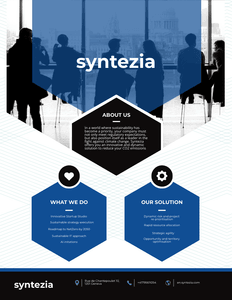



transform and perform
- Engagements
- Services
- Services catalogue
- Events
- Methods and tools
- kickstart esg 4 hours
- Discover our ecosystem
- Mediation circles
- Funding
- Franchise
- Contact
- Contact us
- Reservation
- Blue economy
- Press room
- Historical
- HR
- Sustainability reports
- …
- Engagements
- Services
- Services catalogue
- Events
- Methods and tools
- kickstart esg 4 hours
- Discover our ecosystem
- Mediation circles
- Funding
- Franchise
- Contact
- Contact us
- Reservation
- Blue economy
- Press room
- Historical
- HR
- Sustainability reports



transform and perform
- Engagements
- Services
- Services catalogue
- Events
- Methods and tools
- kickstart esg 4 hours
- Discover our ecosystem
- Mediation circles
- Funding
- Franchise
- Contact
- Contact us
- Reservation
- Blue economy
- Press room
- Historical
- HR
- Sustainability reports
- …
- Engagements
- Services
- Services catalogue
- Events
- Methods and tools
- kickstart esg 4 hours
- Discover our ecosystem
- Mediation circles
- Funding
- Franchise
- Contact
- Contact us
- Reservation
- Blue economy
- Press room
- Historical
- HR
- Sustainability reports

syntezia biodiversity
Our mediation circle for the bioeconomy, the protection of water resources, wood resources, terrestrial and marine biodiversity, and the habitat of species, particularly those in danger of extinction.
Innovation can play a crucial role in protecting biodiversity by offering new and sustainable solutions to environmental challenges.
Here are some concrete examples of the topics we like to address within syntezia biodiversity:
1. Surveillance and monitoring of biodiversity:
- Drones and satellites: Technologies like drones and satellites make it possible to monitor and track the state of biodiversity on a large scale.
- Artificial Intelligence: Artificial intelligence can be used to analyze collected data and identify areas where biodiversity is under threat.
- Bioacoustics: Technologies like bioacoustics make it possible to track animal populations by analyzing their sounds.
2. Sustainable agriculture and fishing:
- Precision agriculture: Precision agriculture reduces the use of pesticides and fertilizers, which is beneficial for biodiversity.
- Sustainable aquaculture: Sustainable aquaculture allows fish to be produced in a more environmentally friendly way.
- Agroforestry: Agroforestry, which consists of combining trees and agricultural crops, helps create habitats for biodiversity.
3. Reduction of pollution and waste:
- Renewable energy: Renewable energy, such as solar and wind power, helps reduce air pollution and greenhouse gas emissions.
- Circular economy: The circular economy aims to reduce waste production and reuse existing materials.
- Depollution technologies: Innovative technologies make it possible to depollute contaminated soil and water.
4. Ecosystem Restoration:
- Biomimicry: Biomimicry draws inspiration from natural forms and processes to design sustainable solutions.
- Ecological engineering: Ecological engineering makes it possible to restore degraded ecosystems.
- Reintroduction of species: The reintroduction of threatened species makes it possible to rebuild fragile ecosystems.
5. Awareness and education:
- Virtual and augmented reality: Virtual and augmented reality can be used to raise awareness about biodiversity.
- Video games: Video games can be used to educate children about the importance of biodiversity.
- Awareness campaigns: Awareness campaigns can be organized to inform the public about threats to biodiversity and possible solutions.
With our methods and tools, we can offer a powerful tool that can be used to protect biodiversity. By encouraging innovation and supporting sustainable initiatives, we can help preserve the planet for future generations.
We don't have a miracle solution.
We propose to use our tools and methods responsibly and ethically, in order to put in place policies and regulations that protect biodiversity.
We intend to play a crucial role in protecting biodiversity.
By combining innovation, strategy, policy and citizen action, we can create a more sustainable future for the planet.


